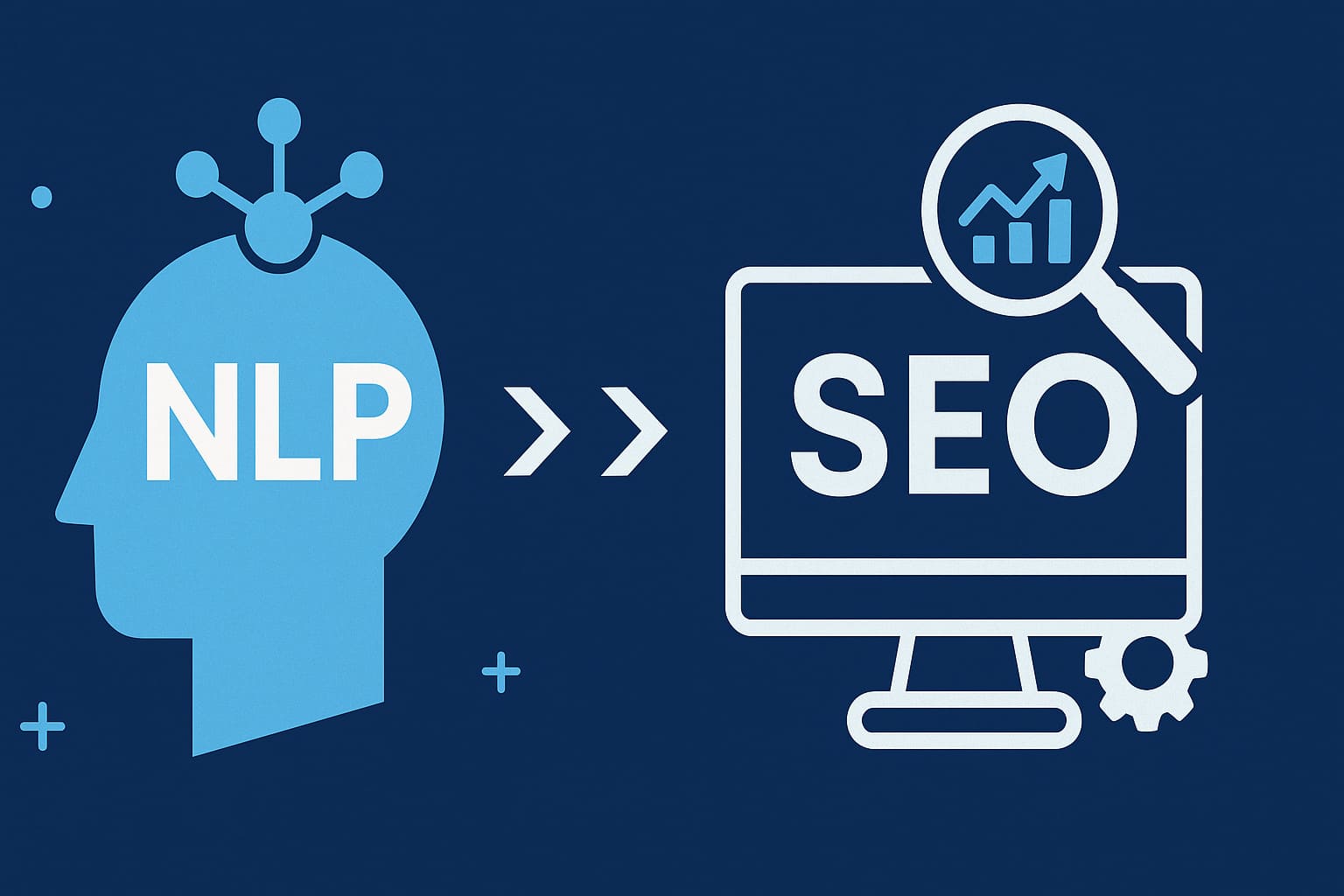SEO tricks that worked five years ago will not save you today. Google has moved on.
Search engines now look for meaning, not just keywords. They track structure, clarity, user signals, and intent. This is where AI in SEO makes sense—but only if you use it right.
Good SEO today starts with clean content, strong site signals, and machine-readable context. AI helps you scale fast, but it needs the right base to work.
This blog explains the 7 foundational elements that make SEO work with AI. You will learn what matters now, what machines need to understand, and what actually helps your site rank.
We keep it simple. We focus on what works. You will see where AI fits in, where it helps, and where it still needs you.
What Is SEO with AI?
SEO with AI is the use of artificial intelligence to improve how your website ranks in search engines like Google. It goes beyond just using tools. It is about letting smart systems guide your decisions—from content creation to performance tracking.
AI can handle tasks that usually take hours. It scans huge volumes of data, spots patterns, and gives instant feedback. For example, instead of manually researching keywords or fixing broken links, you let AI do the heavy lifting.
Tools powered by AI can help you:
- Generate content ideas that match real search intent
- Create outlines based on top-ranking competitors
- Write articles that are optimized before you hit publish
- Suggest where to add schema markup so Google understands your page
- Spot drops in keyword rankings—and tell you why it happened
Think of it this way: AI SEO is not just faster, it is smarter. It lets you work on strategy while the system handles routine tasks. You get better content, cleaner structure, and insights that are hard to spot manually.
7 Key Foundational Elements for SEO with AI
AI is not here to replace SEO. It is here to sharpen it. But to make AI work for your rankings, you need the right base. Without the basics in place, even the smartest AI tool cannot help.
Here are the 7 core foundations elements that every AI-powered SEO strategy should start with. Each one builds the structure machines understand and users trust.
1. Smart Content That Feels Human
Great content is not just written. It connects. It teaches. It ranks. In AI SEO, smart content must sound human, read smooth, and speak directly to search intent. If not, users leave. Search engines notice. Rankings drop.
Today SEO is not about stuffing pages with facts. It is about writing that sounds like you and makes sense to your reader. Most AI tools can help you write.
AI-generated content gives you a draft. You must give it a voice. A machine can mimic grammar. Only a human can add trust, tone, and flow. Read your content aloud. Does it sound like something you would say? If not, rewrite. Add pauses. Use simple words. Replace tech terms with human language.
Use content personalization to speak to different users at different times. AI tools now suggest content variations by city, device, or search type. A returning visitor from Bangalore should not see the same message as a first-timer from Noida. Change the pitch. Keep the trust.
Stay focused with topical relevance. Do not mix three ideas in one post. Search engines prefer tight answers. If your topic is “how to use schema,” avoid talking about backlinks. Use NLP tools to find subtopics and group them.
Let AI suggest words with natural language generation, but filter them with your brain. Say it straight. “Speed up your site to keep users” works better than “optimizing performance metrics for enhanced experience.” Skip the fluff.
Always fact-check AI outputs. AI may sound confident, but it can be wrong. If it says “Core Web Vitals update rolls out monthly,” verify it. One false stat can drop your credibility fast.
Smart content speaks clearly. It reads smooth. It answers one thing well. When you write this way, both machines and humans get it.
2. Keyword Strategy Built on Intent
Most websites target keywords. Few understand them. That is why they rank on page five and stay there. The goal is not to chase words—it is to match meaning.
AI tools help you find what people are really looking for. This is called search intent. It tells you why someone types a phrase—not just what the phrase says.
For example, someone searching “best SEO tool” wants reviews and choices. Someone typing “how do I fix low traffic” wants a step-by-step guide. Same topic. Different need. If you give the wrong answer, your page gets skipped.
“Intent is the reason behind the search. Keywords are just clues.”
Let AI suggest keywords. Then group them by intent. Use tools like SEMrush, Ahrefs, or ChatGPT with TOFU–MOFU–BOFU logic:
-
TOFU (Top of Funnel): “What is SEO?” → User is learning
-
MOFU (Middle): “Best SEO plugins” → User is comparing
-
BOFU (Bottom): “Buy SEO audit service” → User is ready to act
This structure helps you build pages that solve problems at the right stage. AI can scan queries, cluster them, and show you where to focus. Your job? Write one clear page per intent.
Avoid mixing intent. If a page says “buy now” but also explains what SEO is, it confuses everyone—including Google.
Use natural phrasing in your content. Do not over-optimize. Let AI suggest terms like “rank better on Google” or “get more traffic,” but make sure they read like real sentences. Keyword density helps, but keyword clarity wins.
Once you learn to match your content with the reason behind a search, your rankings will climb without force.
3. Clean Technical Setup
Good content fails if your site is broken. It is like putting fresh food on a dirty plate. No matter how strong your keywords or helpful your blog, if your site is slow or messy, Google will skip it.
AI tools help fix technical SEO faster, but you must know what to check.
Start with page speed. A fast site keeps users longer. Slow pages lose them. Use tools like PageSpeed Insights or Lighthouse to scan what slows your site down. AI can read these reports and suggest quick fixes like image compression or script blocking.
Next, focus on Core Web Vitals. These are three important signals Google tracks:
-
LCP (Largest Contentful Paint): How fast your main content loads
-
FID (First Input Delay): How soon your page reacts to clicks
-
CLS (Cumulative Layout Shift): How stable your layout feels
Fix these before writing more content. Even great blogs cannot rank if users bounce before reading.
Keep your site indexable. If Google cannot see your pages, they do not exist. Use XML sitemaps and check your robots.txt file. AI SEO tools can scan for blocked pages, broken links, or hidden content.
Use proper schema markup. It tells Google what each page means, not just what it says. Add structured tags like FAQ, article, or product. Tools like Merkle Schema Generator or AI assistants can help you generate these.
“SEO does not work if your site does not.”
Lastly, run regular website SEO audits. AI makes this easy. Use tools that check for mobile issues, slow code, or missing meta tags. Schedule these scans weekly.
4. Schema and Entity Connections
Search engines do not just read your text. They try to understand its meaning. That is where schema markup and entity connections come in. Together, they help machines “see” what your page is about—just like a person would.
Schema markup is small code you add to your page. It labels what type of content you have. For example, a review gets Review schema. A guide gets HowTo schema. A product gets Product schema. This helps your page show rich results like ratings, FAQs, or how-to steps in Google.
Say you write a recipe. Add Recipe schema. Google may show your cooking steps in the results—even with images. That means more clicks without ranking higher.
Use tools like Schema.org helpers to create your tags. Many AI SEO tools now suggest schema automatically. But always double-check before publishing. If you need help setting it up right, you can also explore schema markup implementation services that ensure your schema matches what the page actually says.
Now let us talk about entity connections. Entities are not just keywords. They are real things: names, places, products, brands. Google uses them to build meaning. If your blog mentions “Apple,” is it a fruit or a tech brand? Entities tell the difference.
AI tools like SurferSEO help find and link these entities properly. They show gaps in your topic. This improves your semantic relevance—which helps Google understand your expertise.
“If Google understands your content, it shows it to more people.”
Clean schema plus clear entity mapping builds trust with machines. And that trust leads to rankings.
5. Search Intent Matching
If your page does not match what people want, it will not rank—no matter how well it is written. This is where search intent becomes the core of smart SEO with AI.
Search intent is the real goal behind a search. And matching it is the backbone of AI-powered SEO. AI tools now scan queries, detect patterns, and sort them by intent. But your job is to turn those patterns into clear, useful pages.
People often use search engines when they want to:
-
Compare products: Review prices, features, and opinions before buying.
-
Find places: Locate nearby stores or services with good reviews.
-
Learn something new: Follow tutorials on gardening, health, tech, or DIY.
-
Fix a problem: Search for fast, clear answers to issues they are facing.
Now imagine a user searching “how to speed up my site.” They need a fix—not a sales page or theory. That is the intent. Your content should give steps, not pitch tools. If you miss that, they bounce—and Google tracks that.
“Ranking comes from giving users what they came for—not what you want to say.”
AI SEO tools like Surfer, ChatGPT, and Keyword Insights can suggest what type of content ranks for each keyword. They spot SERP patterns and show if people expect a blog, a list, or a product page.
The key is focus. Do not try to teach, sell, and answer everything on one page. Pick one intent. Deliver it fully. That is what makes your content rank and stick.
6. Smarter Internal Linking
Think of your website like a city. Each page is a building. Internal links are the roads that connect them. If there are no roads, users and search engines get lost. This is why internal linking is one of the strongest yet most ignored foundations of AI SEO.
Google follows links to understand what pages matter most. If your blog links to your service page, it tells Google that both are connected. But random links do not help. You need relevant paths that guide readers—and bots.
AI tools like Link Whisper, or Ahrefs Site Audit can now suggest smart link opportunities. They scan your content, find related pages, and highlight missing links. You can then link naturally without stuffing your content.
For example, if your blog is about “site speed,” link to your “technical SEO service” page where you explain Core Web Vitals. If you mention FAQs, link to a page with structured FAQs using schema markup.
“Smart internal links lead users where they need to go—before they even ask.”
But context matters. Only link pages that truly help. Do not force links just to push rankings. If the page adds value, link it. If not, skip it.
Also, mind your anchor text. Use descriptive phrases like “see our on-page SEO checklist” instead of “click here.” This improves clarity and semantic signals, which help Google understand the topic of both pages.
Regularly audit your links. Use AI-powered internal link reports to spot orphaned pages—ones that no other page links to. These are SEO dead ends. Fix them by linking from relevant posts.
A clean internal structure helps search engines crawl deeper. And it keeps your users engaged, clicking, and converting.
7. Real-Time Learning and Optimization
SEO is not one and done. What works today might drop tomorrow. Algorithms shift. Competitors rise. This is why real-time learning is no longer optional—it is a core part of SEO with AI.
AI tools can now track changes as they happen. You can see if a keyword slipped, if a page slowed down, or if a title stopped getting clicks. Tools like Google Search Console, Semrush Copilot, or ChatGPT plugins give live updates and quick fixes.
Example: Your blog ranked for “SEO basics.” Now it’s gone. AI tells you traffic dropped after Google changed how it shows snippets. It also suggests reworking your heading and adding schema.
This is not guesswork. It is real-time optimization.
Run content audits every month. AI can scan what ranks, what dropped, and what content needs refresh. It might say: “Update your stats,” “Add an FAQ,” or “Your intro is too long.”
“Ranking once is easy. Staying there takes constant tuning.”
Also track user behavior. Are they clicking? Scrolling? Leaving too fast? Tools like Hotjar or Microsoft Clarity show heatmaps and actions. AI turns that into insights like “Your CTA is too far down” or “Users skip your second heading.”
Do not forget mobile. Many users leave if the layout feels wrong. AI tools test your site on multiple devices and flag broken sections fast.
Final Thoughts: Build With AI, But Think Like a Human
AI can guide you. But it cannot replace you.
You still need to think, choose, and care. That is what makes your SEO work—not just rank. The smart tools give you speed and insights, but the voice, structure, and trust still come from you.
Here is a quick recap of the 7 core foundational elements for SEO with AI:
- Write smart content that sounds human
- Match keywords with user intent
- Fix your technical setup first
- Add schema markup and clear entities
- Align content with real search intent
- Link pages with purposeful internal paths
- Keep learning with real-time optimization
Use AI to support, not to autopilot. Let it scan, suggest, and sort. But always shape your message with clarity, truth, and direction.
Start applying one foundation at a time. Fix what you know is broken. Watch what changes. That is how you grow—step by step.
If you ever feel stuck, come back to this list. You do not need more tools. You just need better action.






